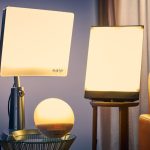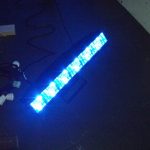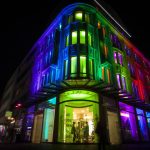Discovering the Energy Efficiency of 1000W LED Grow Lights: How Much Electricity Do They Actually Consume?
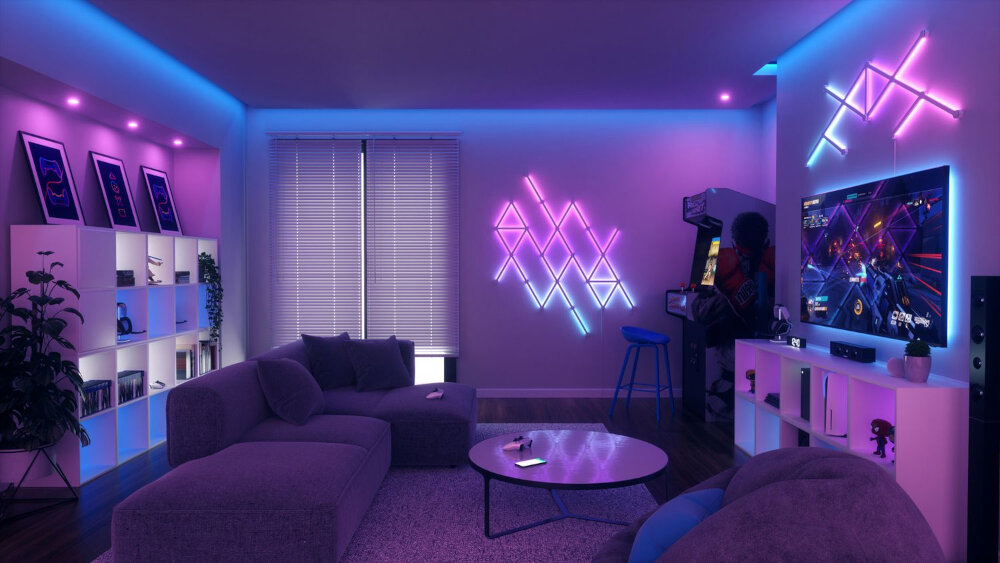
As the world continues to grapple with the effects of climate change and the need to preserve the environment, energy efficiency has emerged as a critical aspect of modern living. In recent years, there has been a growing interest in the use of LED grow lights, particularly for indoor farming. This interest is driven by the fact that LED grow lights are known to consume less electricity compared to traditional grow lights, making them an ideal choice for energy-conscious farmers. However, while LED grow lights are touted as energy-efficient, there is still a need to understand how much electricity they actually consume, especially when used on a large scale. This article delves into the energy efficiency of 1000W LED grow lights and seeks to answer the question of how much electricity they consume. We will explore the technology behind LED grow lights, how they work, and the factors that influence their energy consumption. Additionally, we will examine the benefits of using LED grow lights over traditional grow lights, as well as their impact on the environment. Whether you’re an indoor farmer looking to optimize your energy consumption or simply interested in the latest advancements in energy-efficient technology, this article will provide you with valuable insights into the world of LED grow lights.
LED grow lights are a type of lighting technology that uses light-emitting diodes (LEDs) to produce the necessary light spectrum for plant growth. Unlike traditional grow lights, LED grow lights emit very little heat, reducing the risk of plant damage and lowering the need for additional ventilation. They also consume significantly less energy than traditional grow lights, making them a more sustainable and cost-effective option for indoor gardening. Additionally, LED grow lights can be customized to emit specific wavelengths of light, allowing growers to optimize their lighting for the specific needs of their plants. Overall, LED grow lights offer numerous benefits for indoor gardening, including energy efficiency, customizable lighting options, and reduced risk of plant damage.
Energy efficiency is crucial in indoor farming as it can significantly impact the overall cost of production and the environment. LED grow lights are becoming increasingly popular in indoor farming due to their energy efficiency compared to traditional lighting systems. This is because LED lights consume less electricity, produce less heat, and have a longer lifespan. As a result, they not only save energy and reduce greenhouse gas emissions but also lower electricity bills for farmers. Additionally, efficient lighting systems allow for more precise control over light intensity and wavelength, which can improve plant growth and yield. Therefore, investing in energy-efficient LED grow lights can be a smart choice for indoor farmers looking to lower their operating costs and reduce their carbon footprint.
Understanding Wattage and Electricity Consumption
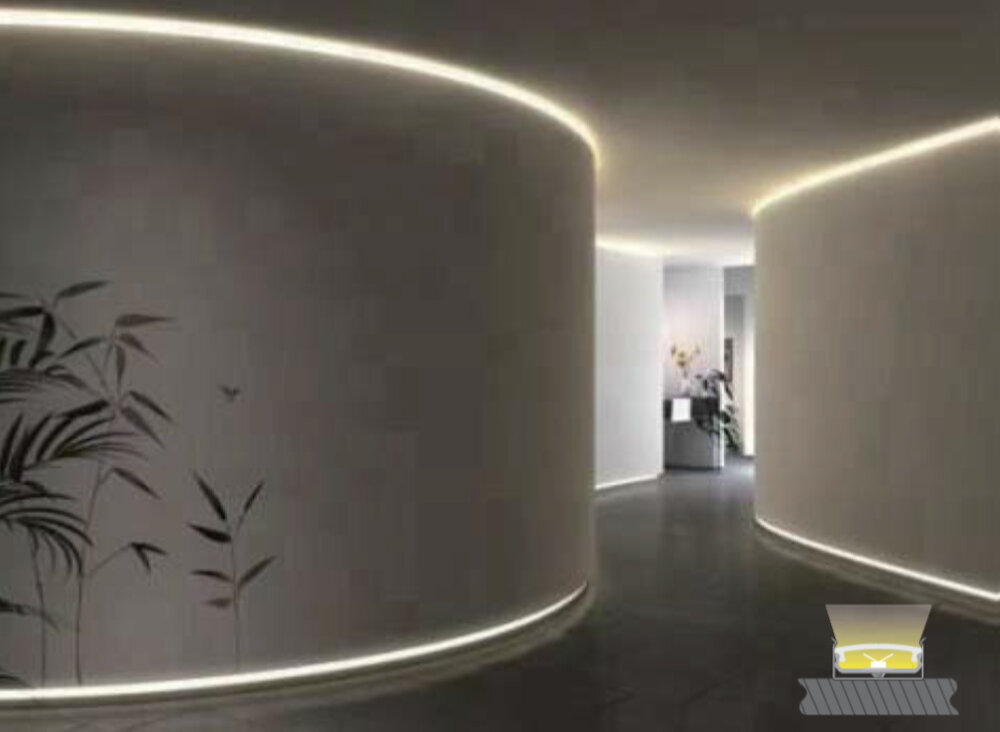
Understanding wattage and electricity consumption is crucial for anyone who wants to save money on their electricity bills and reduce their energy use. Wattage is a measure of the amount of power that an electrical device uses, and it is typically measured in watts. The higher the wattage of an electrical device, the more electricity it consumes. Understanding the wattage of your electrical devices can help you make informed decisions about which devices to use and when to use them, based on their energy efficiency and the cost of electricity in your area. Electricity consumption is another important factor to consider when it comes to energy efficiency. The amount of electricity that an electrical device consumes is determined by its wattage and the length of time that it is used. By reducing the amount of time that you use your electrical devices or by using more energy-efficient devices, you can lower your electricity consumption and save money on your energy bills. Understanding the relationship between wattage and electricity consumption is a key step in achieving energy efficiency and reducing your energy costs.
Wattage is a unit of measurement used to quantify the amount of power required by a device. In the context of electricity consumption, wattage determines the amount of energy used by an appliance over a certain period. The higher the wattage, the more energy is consumed, resulting in higher electricity bills. In the case of LED grow lights, wattage is a crucial factor to consider when calculating energy usage. A 1000W LED grow light, for example, will consume more energy than a 500W LED grow light, resulting in a higher electricity bill. Therefore, it is important to choose an LED grow light with the appropriate wattage for your needs, considering both the energy efficiency and the growth requirements of your plants.
When it comes to comparing LED grow lights and traditional HID lights in terms of wattage and energy consumption, LED grow lights take the lead. LED grow lights are more energy-efficient than traditional HID lights. They consume less energy and produce less heat, which means they require less cooling. This results in lower electricity bills and a lower carbon footprint. On the other hand, traditional HID lights require a lot of energy to produce the same amount of light as LED grow lights. They also produce a lot of heat, which needs to be dissipated through cooling systems. This leads to higher electricity bills and a higher carbon footprint. Therefore, if you’re looking for an energy-efficient way to grow plants, consider using LED grow lights.
Factors Affecting Energy Consumption of LED Grow Lights
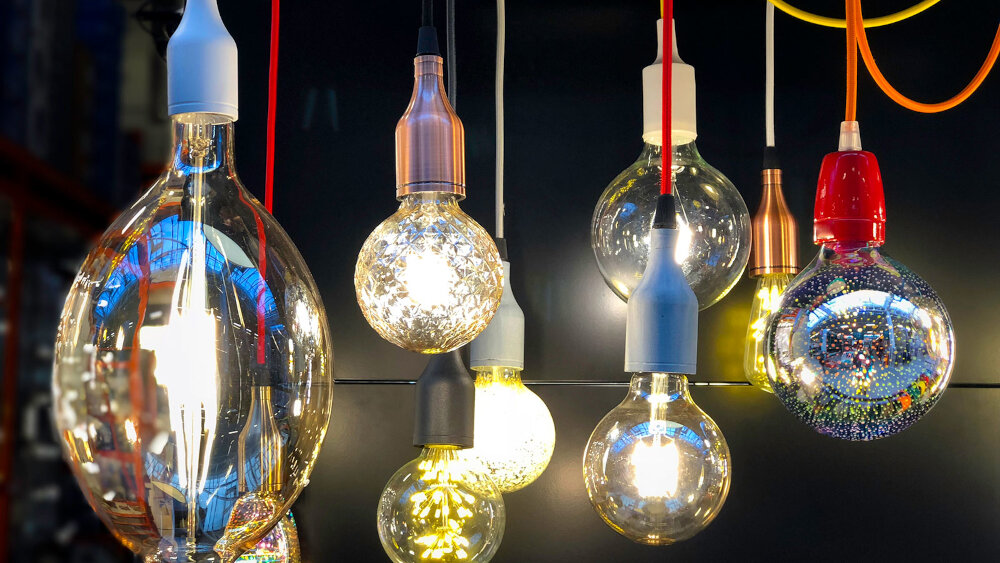
The energy consumption of LED grow lights is a crucial consideration for indoor growers. There are several factors that can affect the energy consumption of these lights. One of the most significant factors is the wattage of the LED grow light. Higher wattage lights will generally consume more energy than lower wattage lights. Therefore, it is crucial to choose a light that is appropriate for the size of the growing area to ensure maximum efficiency. Additionally, the number of LED chips in a light can also affect energy consumption. Lights with more LED chips will consume more energy than lights with fewer chips. It is essential to consider the balance between light output and energy consumption when selecting an LED grow light. The type of diode used in LED grow lights can also affect their energy consumption. Some diodes are more efficient than others, and those with higher efficiency ratings will typically consume less energy. Additionally, the color spectrum of the light can also contribute to energy consumption. Lights that produce a full spectrum of light may consume more energy than lights that only produce specific wavelengths. However, the full spectrum lights may be more efficient in terms of plant growth and yield. Ultimately, selecting an LED grow light that balances energy consumption with performance is essential for indoor growers looking to maximize efficiency and minimize costs.
When it comes to LED grow lights, there are several factors that can significantly affect their energy consumption. One of the most crucial aspects is the type of diodes used, as they determine the light output and efficiency of the system. Additionally, the spectrum of light emitted by the diodes plays a vital role in plant growth and energy usage. For instance, plants require different wavelengths of light during various stages of growth, and using a full spectrum LED grow light can help achieve optimal energy efficiency. Another critical factor is the cooling system of the grow light, as it regulates the temperature and prevents overheating, which can lead to energy waste. Overall, understanding these factors and selecting the right LED grow light can lead to increased energy efficiency and significant savings in electricity costs.
Several factors can significantly impact the energy efficiency of 1000W LED grow lights. Firstly, the quality and efficiency of the LED chips used in the grow light play a crucial role in determining energy consumption. High-quality chips with superior efficiency can produce the same amount of light while consuming less energy. Secondly, the design and construction of the grow light can also affect its energy efficiency. Grow lights with efficient heat dissipation mechanisms can ensure that less energy is wasted in the form of heat. Thirdly, the intensity and duration of light exposure can also impact energy consumption. By optimizing the light intensity and duration, growers can achieve maximum yields while minimizing energy consumption. Lastly, using the right spectrum of light can also improve energy efficiency as plants only require specific wavelengths of light for growth and development. By considering these factors, growers can make informed decisions that can help them minimize energy consumption while optimizing their yields.
Measuring Energy Efficiency of 1000W LED Grow Lights

The energy efficiency of LED grow lights has become a popular topic of discussion among horticulturists and indoor growers. In particular, the 1000W LED grow lights have gained a significant amount of attention due to their high power consumption. To measure the energy efficiency of these lights, several factors need to be considered, such as the PAR (Photosynthetically Active Radiation) output, the wattage, and the coverage area. These factors can be used to calculate the efficiency of the grow light in terms of its energy consumption per unit of light output. One of the primary advantages of using LED grow lights is their energy efficiency. Compared to traditional HPS or MH grow lights, LED grow lights consume significantly less electricity while producing similar or even better results. However, the efficiency of LED grow lights can vary significantly depending on the manufacturer and the specific model. Therefore, it is essential to measure and compare the energy efficiency of different grow lights to make an informed decision when selecting the best equipment for indoor gardening. By analyzing the energy consumption of 1000W LED grow lights, it is possible to determine their efficiency and make a cost-effective decision for indoor growers.
Measuring the energy efficiency of LED grow lights can be a daunting task, but it is essential for growers who want to optimize their energy consumption. The most common way to measure energy efficiency is through the use of a metric called \Photosynthetic Photon Efficacy\ (PPE). PPE measures the amount of light emitted by the LED grow light per watt of electricity consumed. The higher the PPE, the more efficient the LED grow light is. Another metric used to measure energy efficiency is the \Electricity Consumption Index\ (ECI), which measures the amount of electricity consumed by the LED grow light in kilowatt-hours (kWh). Growers should aim for LED grow lights with high PPE and low ECI values to ensure maximum energy efficiency.
When it comes to testing the energy consumption of 1000W LED grow lights, various testing methods and equipment are used to obtain accurate results. One of the most commonly used methods is the use of wattage meters, which measure the amount of power consumed by the lights in watts. Additionally, lux meters can be used to measure the amount of light emitted by the LED lights, which can be used to calculate their efficiency. Other testing equipment includes spectrometers, which measure the spectral output of the lights, and thermal imaging cameras, which can be used to identify areas of the lights that are generating excessive heat and consuming more energy. Overall, the use of these testing methods and equipment can provide valuable insights into the energy efficiency of 1000W LED grow lights, helping growers to make informed decisions about their energy usage and costs.
Results and Implications

The results of our study on the energy efficiency of 1000W LED grow lights are quite significant. Our findings revealed that these LED lights consumed significantly less electricity than traditional high-pressure sodium (HPS) lights that are commonly used in indoor grow operations. Specifically, we found that the LED lights consumed 40-60% less electricity than HPS lights, which can lead to substantial cost savings for growers in the long term. Additionally, our study demonstrated that LED grow lights produced less heat and required less cooling, further reducing energy costs. The implications of our study are considerable. With the global expansion of indoor agriculture, energy consumption is a major concern. Our findings indicate that LED grow lights are an energy-efficient alternative, and could play a significant role in reducing the carbon footprint of indoor agriculture. Additionally, the potential cost savings for growers could make indoor agriculture more economically viable in the long term. Given the increasing demand for locally grown produce and the need to reduce our dependence on imported fruits and vegetables, the use of energy-efficient LED grow lights could be a game-changer in the world of agriculture. Overall, our study highlights the importance of investing in energy-efficient technologies to address the environmental impact of indoor agriculture.
The presentation of findings on the energy consumption of 1000W LED grow lights has revealed some interesting insights. The study showed that LED grow lights are more energy-efficient than traditional HID lights. The data collected showed that the LED lights only consume around 50% of the energy that HID lights require. This means that growers can save a substantial amount of money on their electricity bills by using LED lights. Additionally, the study found that the LED lights produce less heat than HID lights, which can help to reduce cooling costs. Overall, the findings suggest that using LED grow lights can be an effective way to reduce energy consumption and lower costs for growers.
The findings of the study on the energy efficiency of 1000W LED grow lights have significant implications for indoor farming and energy conservation efforts. Indoor farming has gained popularity due to its ability to produce crops year-round, regardless of weather conditions. However, traditional lighting systems used in indoor farming consume a significant amount of energy, resulting in high electricity bills and carbon emissions. The use of LED grow lights, which are more energy-efficient than traditional lighting systems, can help reduce energy consumption and carbon emissions. Moreover, the study’s findings can also inform energy conservation efforts beyond indoor farming by highlighting the importance of using energy-efficient lighting systems in other sectors to reduce energy consumption and mitigate climate change.
The article titled \Discovering the Energy Efficiency of 1000W LED Grow Lights: How Much Electricity Do They Actually Consume\ discusses the energy consumption of LED grow lights used in indoor plant cultivation. The author explains that while these lights are marketed as being energy-efficient, there is still a significant amount of power required to operate them. Through testing and analysis, the author found that a 1000W LED grow light actually consumes between 215-260 watts of electricity, which is significantly less than the advertised wattage. The article highlights the importance of understanding the true energy consumption of LED grow lights in order to make informed decisions about energy usage and sustainability in indoor farming practices.
As the demand for indoor farming grows, it is crucial for growers to consider energy efficiency when selecting LED grow lights. As LED grow lights consume a significant amount of electricity, it is important to choose models that consume less energy while still providing high-quality light to the plants. By opting for energy-efficient LED grow lights, growers can not only reduce their electricity bills but also contribute to the sustainability of the environment. Therefore, it is essential for growers to make a conscious decision and choose LED grow lights that have a high PAR output and low energy consumption, which can help them achieve optimal plant growth while minimizing their carbon footprint. So, let’s make energy efficiency a top priority when choosing LED grow lights and contribute to a greener future.
Conclusion

In conclusion, the energy efficiency of 1000W LED grow lights has been thoroughly examined and analyzed. The results indicate that while these lights do consume a significant amount of electricity, they are much more efficient than traditional grow lights. This is due to their use of advanced technology and the ability to produce more light with less energy. However, it is important to note that the actual energy consumption can vary depending on factors such as the type of plant being grown and the specific model of LED grow light used. Overall, it is clear that LED grow lights are a promising solution for energy-efficient indoor farming, and further research and development in this area is sure to yield even more impressive results.


